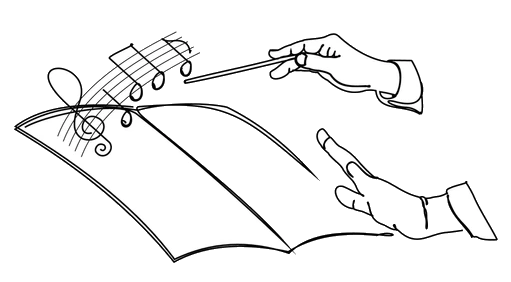October Workshop Summary
Annelise began the workshop by introducing the purpose of a conductor: to ensure that a musical ensemble is acting on a united front. In particular, for the NHSMC, a conductor is useful for cuing, cut-offs, and interpreting stylistic elements.
Beginning the practical portion of the workshop with the right hand, she then taught the group four conducting patterns in order to familiarize them with the conducting patterns that she is likely to use: conducting in 2, conducting in 3, conducting in 4, and conducting in 6. (see diagram) She played tunes on the piano for the first 3 patterns, and had the players all conduct with the appropriate motions. This was entertaining to see 22 conductors directing one piano player, but it was also instructive, as it gave everyone a chance to see and feel where beats fell as they conducted.
Moving on to the left hand, Annelise discussed cut-offs, entrances, and expressive elements in general—including dynamics, which she named (piano, forte, etc.) and provided a small chart for on the workshop hand-out. She primarily focused on the techniques she is already familiar with using and is likely to use, including the use of a closed fist to indicate a cut-off and the raising or lowering of the left hand to raise or lower the group’s dynamics.
In order to allow the group to practice all of the above, Annelise assigned a chord tone to each section and asked the musicians to play just that singular chord while following her conducting (particularly with regards to dynamics). After this was done, a substantial amount of time was spent applying the same techniques to some of the concert music for the year, playing through select individual tunes and entire sets. The dynamic and orchestral qualities as practiced during the workshop reflect plans for the actual concert music performances, to which Annelise hopes to add as much expressive variety as possible.
While we just worked briefly on just a few of the tunes in our current concert set, the value of the workshop was immediately evident, through the precision of starts and endings.
